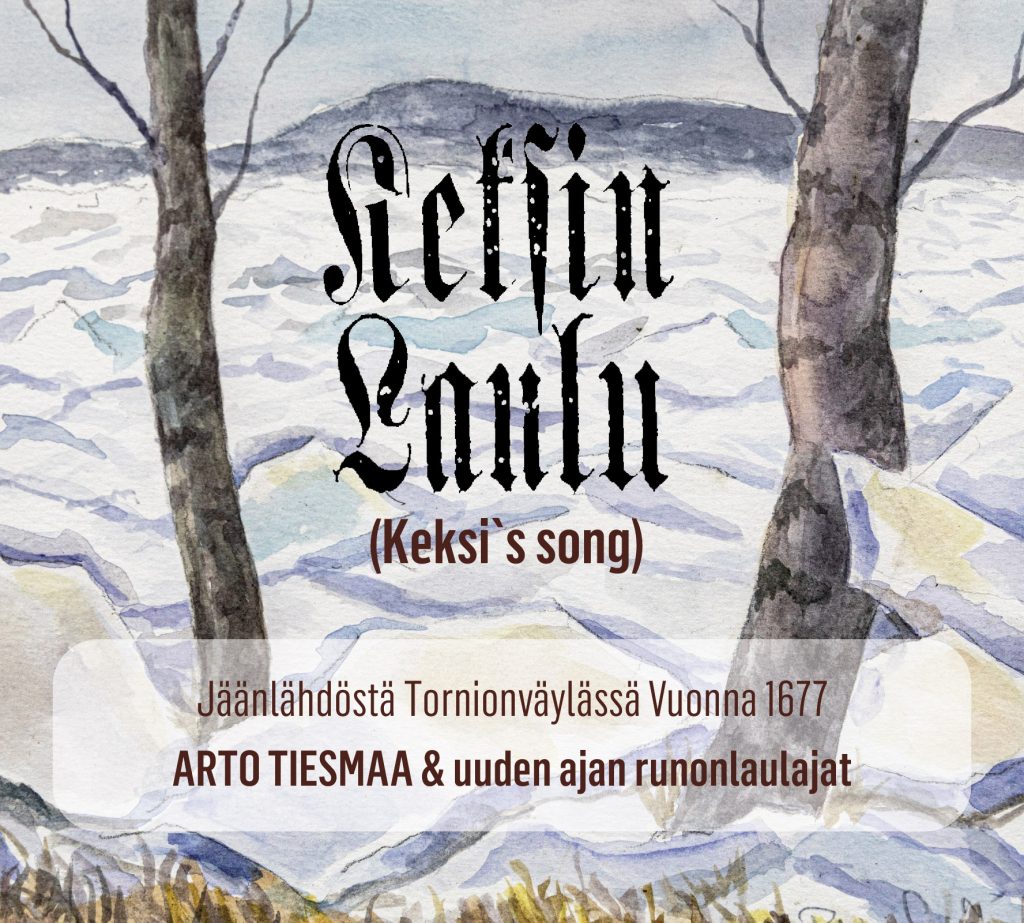Kuvaus
Kun Euroopan pisin vapaana virtaava Tornionjoki purkaa jääpeitteensä, se on aina uutinen. Vuonna 1677 Väylä rymisteli kunnolla ja siitä oli syytä tiedottaa isommalla äänellä. Silloin asiasta ensimmäisenä uutisoi Antti Mikkelinpoika Keksi (1622-1705), joka arvioi vahinkoja ja keräsi tietoa Väylän varresta, jonka jälkeen hän kiersi talosta taloon laulamassa tuhoista ihmisille Kalevala-poljentoa käyttäen. Terävänä sanankäyttäjänä hän lisäsi sekaan myös hyppysellisen huumoria ja pistävää ironiaa. Keksin Laulu viihtyi ihmisten huulilla vuosisatoja. Viimeiset merkit ovat 1970-luvulta. Keksin Laulu on aina kiehtonut myös taiteilijoita ja sitä on esitetty herkästi kanteleella tai akustisella kitaralla helistäen ja siitä ovat pätkiä laulaneet myös kuorot ja kansanmusiikkiyhtyeet, mutta pikkuhiljaa se on menettänyt alkuvoimansa. Aina se on ollut silti ihmisten mielissä, tunnetumpi kuin mikään Kalkkipapin runo. Nyt ARTO TIESMAA (s. 1962) tuo Keksin Laulun tähän päivään yhdessä parhaitten juuriltaan tornionlaaksolaisten laulajien ja soittajien kanssa. http://www.vaylanpyorre.com/vaylanpyorrerecords/
Shortly in English
The sudden breaking of the ice and the flooding of the river in the year of 1677 caused great harm to the people along the Tornio Valley. With a rumble, the Tornio River was freed from its shackles. Later, Antti Mikkelinpoika Keksi (1622-1705) toured from house to house to tell people about what had happened by singing in an ancient Kalevala style. The Tornio Valley national epic of the ice rush in the Tornio fairway was born in 1677. From the beginning the poem, called Keksi’s song spread from mouth-to-mouth until an Italian explorer, Giuseppe Acerbi, heard about it in the rectory in Ylitornio, Sweden. This was written down and published in his travelogue, in the early 18th century. The poem spread among the people during the long next century. In the 1970’s, the musician Hasse Alatalo heard the poem being sung by people who had memorized it by heart as he collected songs from the Tornio Valley. Since then, Keksi’s song has been played with a kantele, a traditional Finnish plucked string instrument. It has occasionally been performed by choirs and folk music groups, but over the decades it has lost its original power and much of the accompanying music is no longer available.






